
SB 1383 requires that clean streams of organic material be collected, recovered, and recycled into new end-products like compost or biofuel. The quality of the end-product is determined by the quality of the material collected, so residents and businesses must properly sort materials, and jurisdictions must monitor containers for contamination. The law allows jurisdictions the option of offering three, two, or one -container collection systems, which provides flexibility in aligning collection programs with local waste processing facility infrastructure. To provide a level of consistency across the state, the law also requires jurisdictions to provide both:
- Standardized colors of residential and business curbside containers and
- Container labels on new containers.
The law allows jurisdictions to provide:
- Source-separated organic waste collection, in which residents and businesses separate material into three, two, or more containers; or
- Single container waste collection, in which organic waste is collected with garbage and recyclables and separated at a high diversion organic waste processing facility.
Jurisdictions may implement one or more collection service options within their community. For example, a jurisdiction may provide a two-container collection service to businesses and a three-container collection service to single-family residences. Residents and businesses must properly sort their organic waste based on the service provided.
Each service allows the collection of uncontainerized green waste and yard waste in the streets if certain requirements are met.
The use of plastic bags or compostable bags in the green containers is at the discretion of the jurisdiction if certain conditions are met.
Detailed Implementation Guidance: SB 1383 Organic Waste Collection Service Options
Three-Container Collection Service
In a three-container system, residents and businesses must separate organic waste, traditional recyclables, and items to be landfilled.
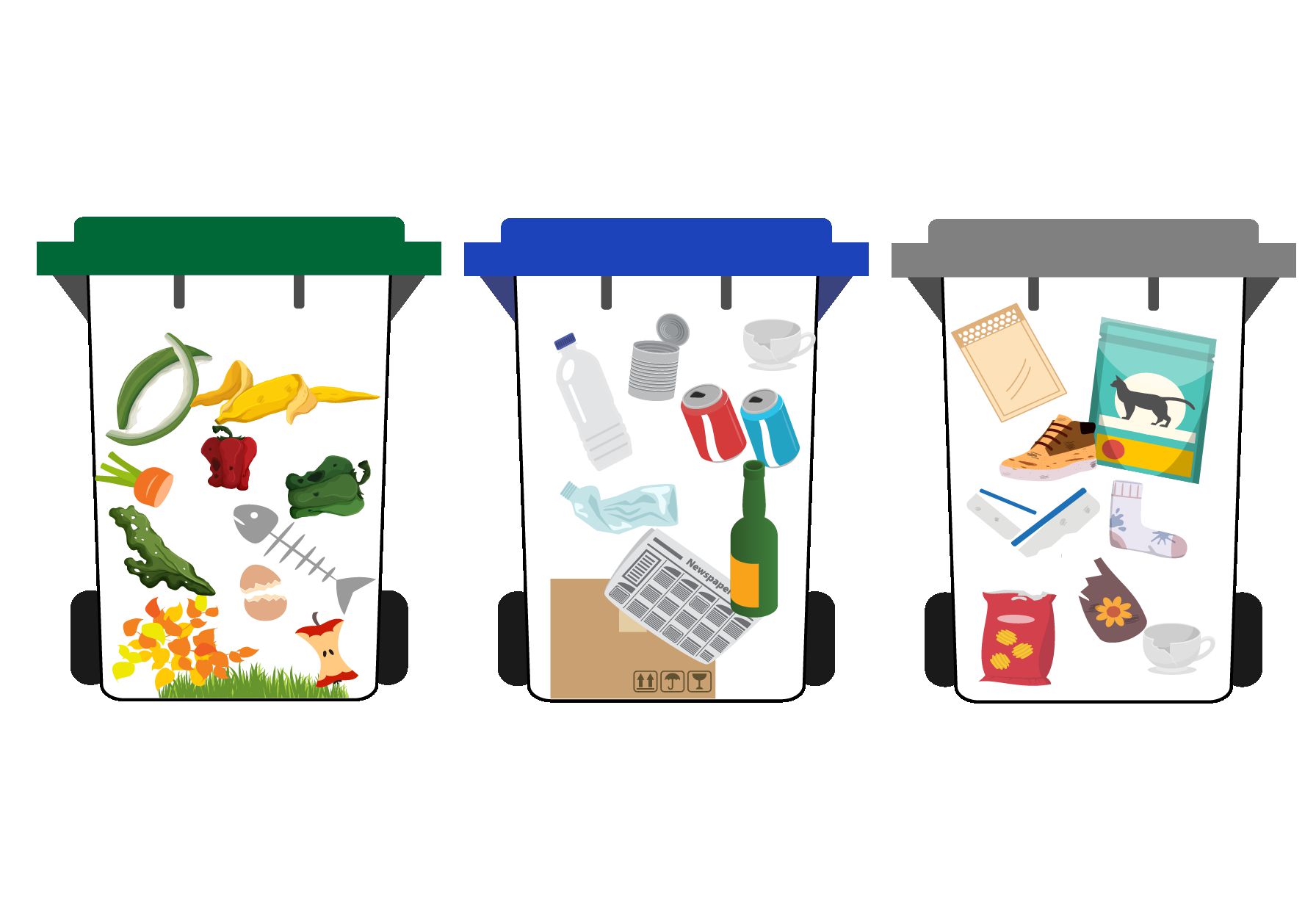
- Green Container: Limited to food waste, yard waste, green waste, other organic materials.
- Blue Container: Allows for traditional recyclables, such as bottles, cans, and plastic, and organic waste such as paper and cardboard.
- Gray Container : Limited to waste that is not organic or recyclable.
- If a jurisdiction allows organic waste in the gray container, then the contents of the container must go to a high diversion organic waste processing facility.
- If a jurisdiction does not allow organic waste in the gray container, and chooses to process the contents of the gray container, then the contents do not have to go to a high diversion organic waste processing facility.
Two-Container Collection Service
In a two-container collection service, residents and businesses separate materials into two bins that are either blue and gray or green and gray. Jurisdictions and haulers will determine which materials to collect in each container. For materials collected in a two-container system, the gray container waste, which includes organic waste and garbage, must be transported to a high diversion organic waste processing facility. Some organic materials, like paper and cardboard, could be collected and sold to be recycled into new paper and cardboard products. In this case, it’s important the material be free of debris and dry. Paper and cardboard could also be collected with other organic waste, like yard and food waste, and it’s not important that the materials are dry because all of the material is composted.
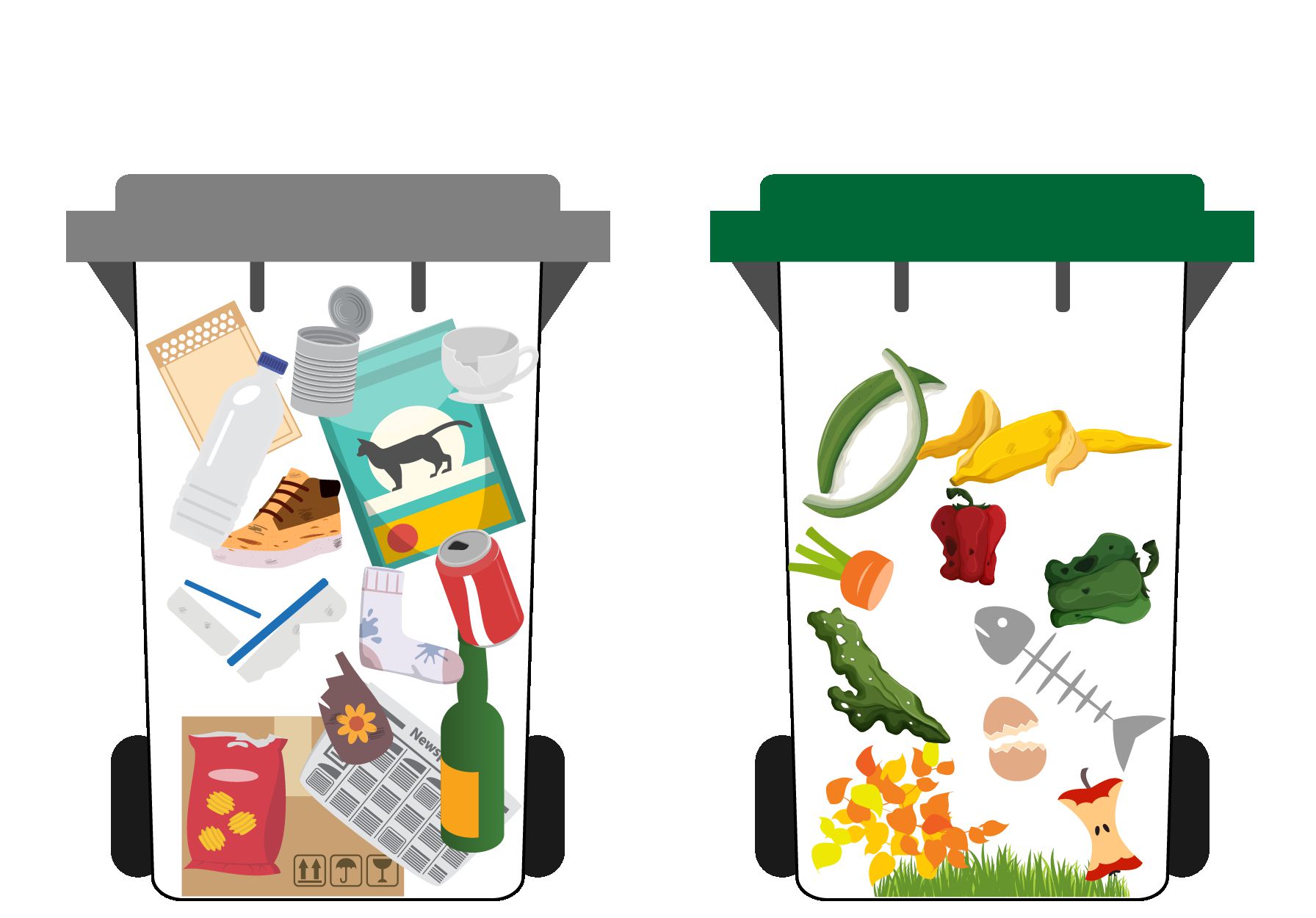
Option A: Gray and Green Containers
- Gray Container: Allows for the collection of organic waste (paper, cardboard) and non-organic recyclables (bottles and cans), and trash.
- Green Container: Limited to only organic waste sent to a source separated organics facility. This includes food waste and yard waste.
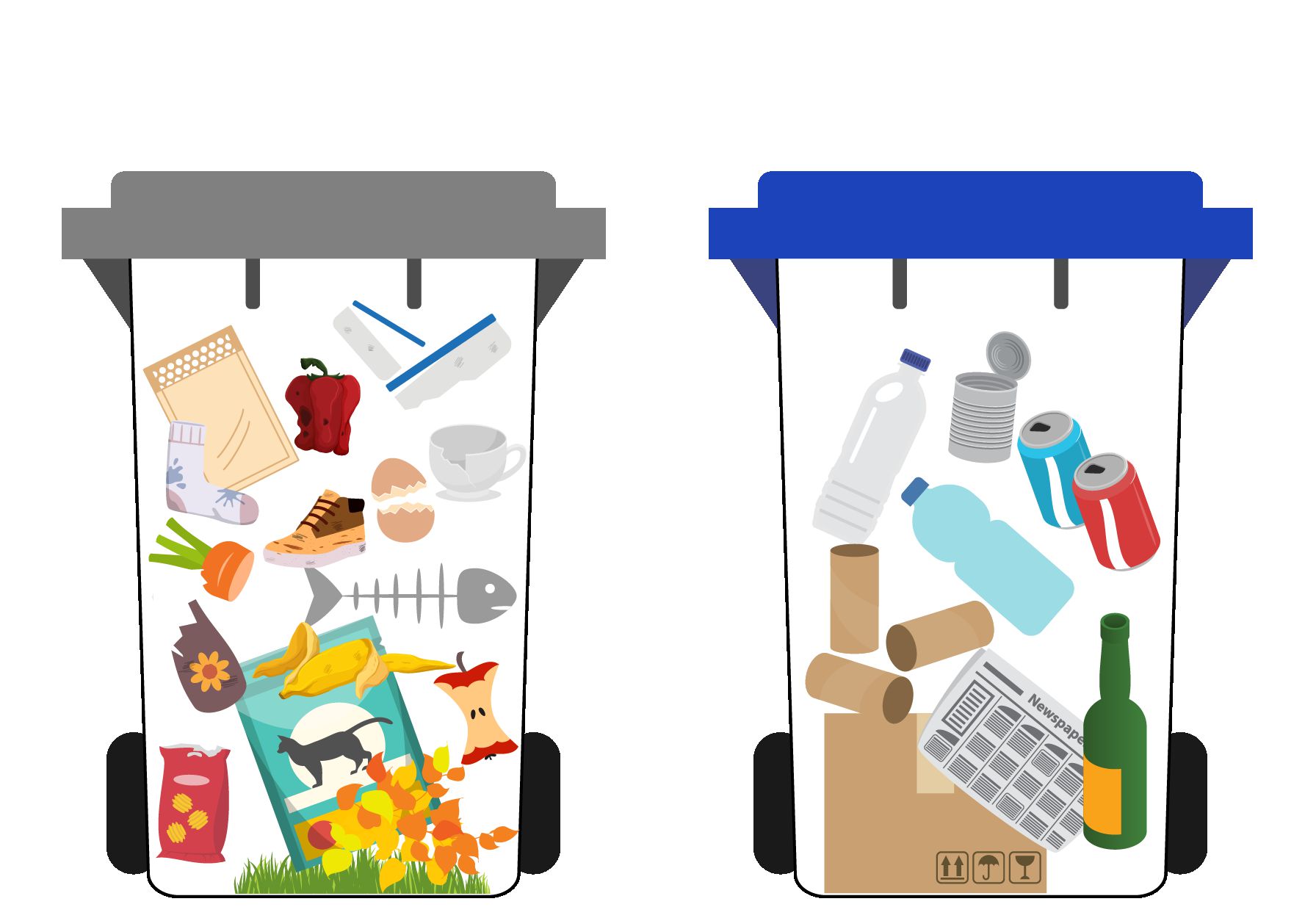
Option B: Gray and Blue Containers
- Gray Container: Allows for the collection of organic waste, such as food waste and yard waste, and trash.
- Blue Container: Limited to traditional non-organic recyclables, such as bottles, and cans, and organic waste, such as paper and cardboard.
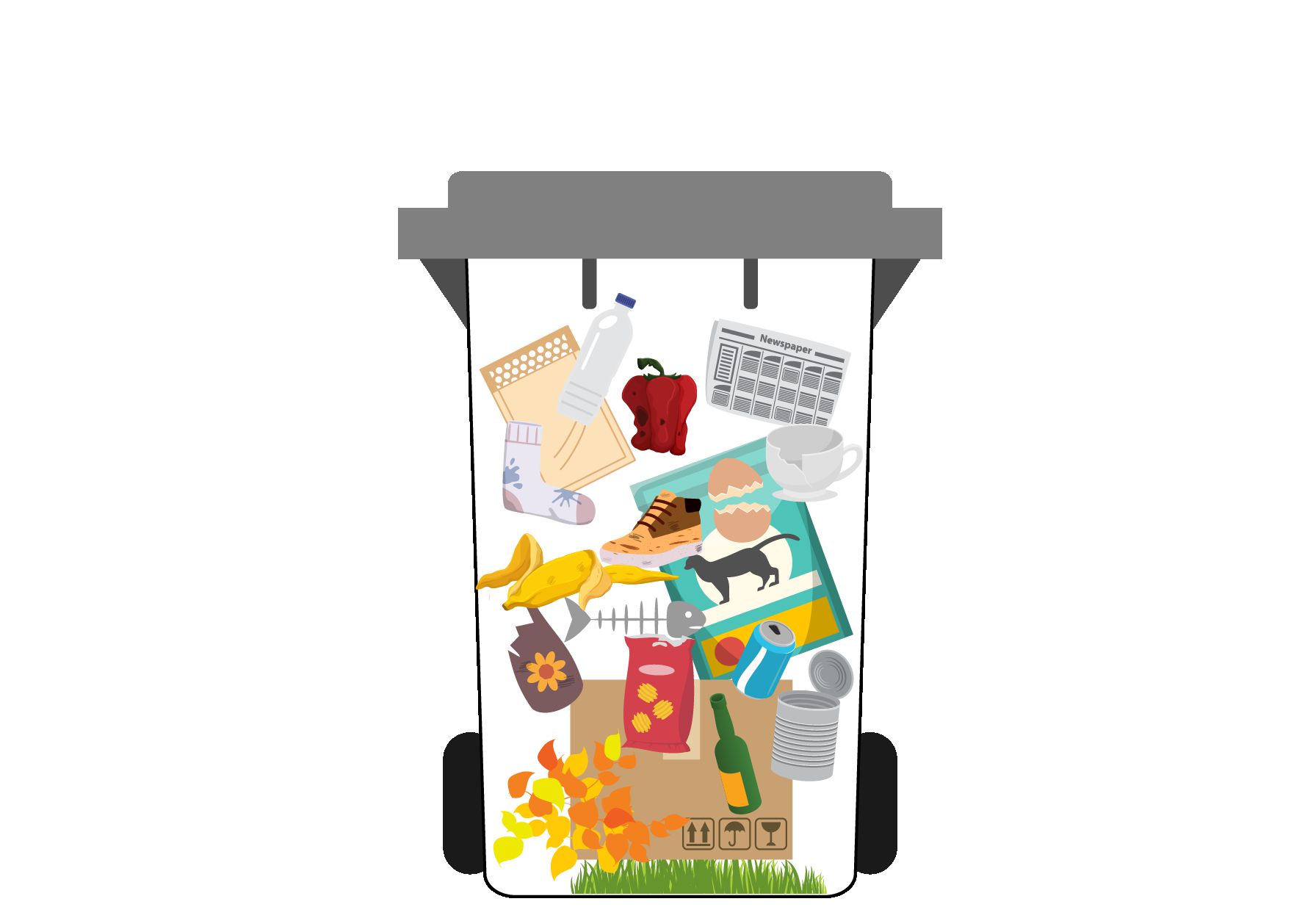
Single Container Collection Service
In a single container collection service, residents and businesses place all materials into a single gray container. They do not separate materials into multiple bins. Haulers collect and then deliver the material to a high diversion organic waste processing facility that can separate the material into multiple streams, including recyclables, organics, and items destined for the landfill.
High-Diversion Organic Waste Processing Facilities
When jurisdictions collect organic waste with recyclables and/or items destined for the landfill in the same container, they must send the mixed waste to a high-diversion organic waste processing facility where the organic waste is recovered. This applies to single-container collection containers and the gray container in both two-container collection service options.
High-diversion organic waste processing facilities must demonstrate they can separate and recover 50 percent of organic materials in the mixed waste stream by January 1, 2022 and 75 percent by 2025.
Additionally, the organic materials that are sent on for further processing should have little contamination by meeting the incompatible materials limit. If recovered organic material contains more than the acceptable levels of incompatible materials limit, then it must be sent to a facility that can meet the organic waste content limit in the material sent for disposal.
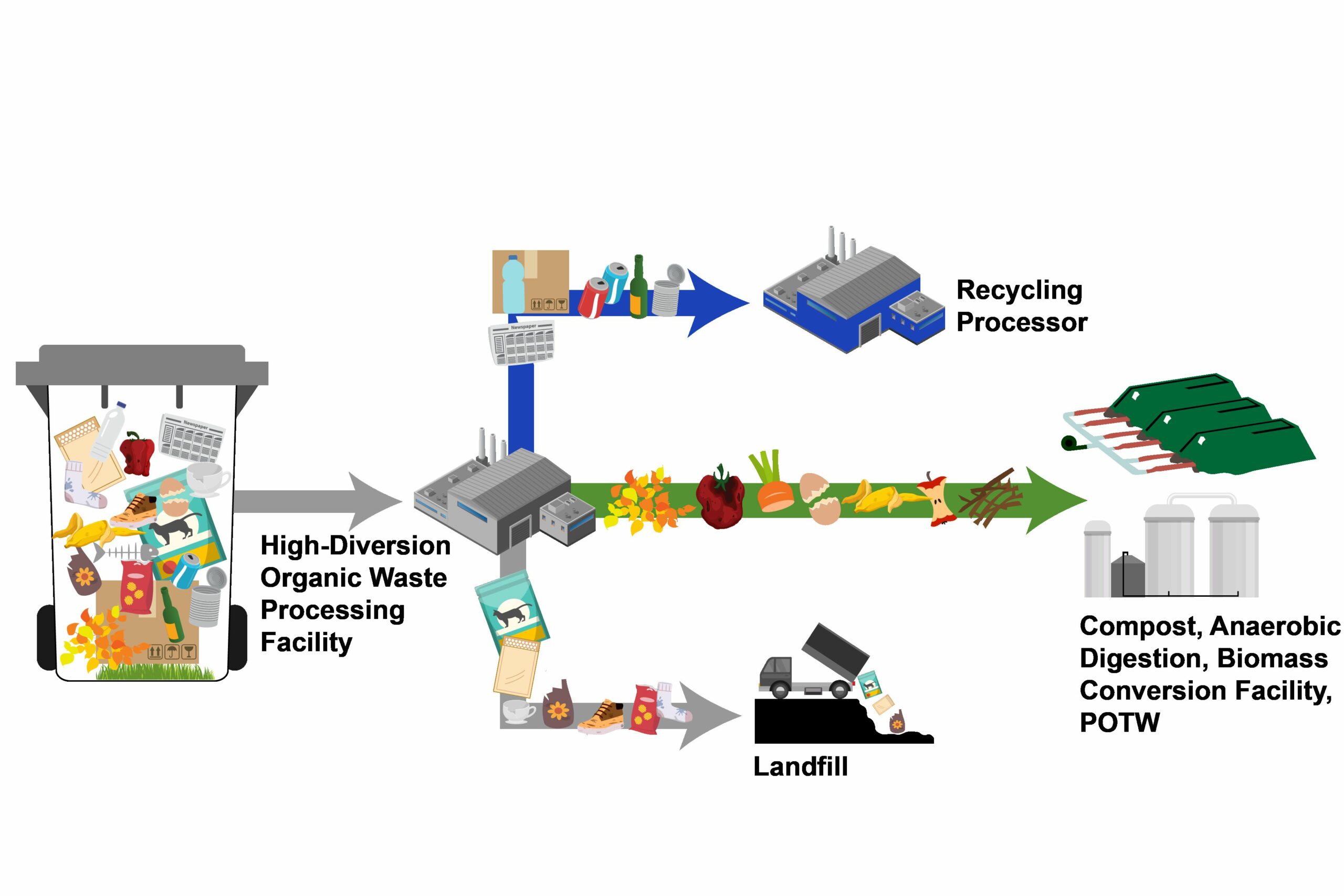
Performance-Based Source Separated Organics Collection Service
If a jurisdiction’s organics collection service yields a clean organics stream with low levels of contamination (less than 25 percent over a specified time), the jurisdiction may choose to implement a performance-based source separated organics collection service. CalRecycle recognizes that high-performing jurisdictions may not need to implement every aspect of the regulations to manage a successful program.
Elements of a Performance-Based Source Separated Organics Collection Service
- Jurisdictions must provide a three-container collection service to 90 percent of residents and 90 percent of commercial businesses.
- Jurisdictions are required to conduct regular waste evaluations to monitor contamination but they may be waived from some education, inspection, and reporting requirements.
- If a jurisdiction cannot maintain low levels of contamination, they must implement a standard three-container collection system.
Split Containers or Additional Containers
Some jurisdictions may use split containers or additional containers in three-container and two-container collection services to further separate organic materials.
- The jurisdiction may use any color provided that the colors do not conflict with the container color requirements (blue, gray, green, or brown) or
- The jurisdiction may use a darker shade of blue for the section of the container designated for the collection of organic waste (paper and cardboard) and a lighter shade of blue or any color not already designated for other materials for the collection of non-organic recyclables (bottles and cans).
- Food waste that is source separated from green and yard waste must be collected in a brown container.
- For example, jurisdictions using a three-container collection service may add additional curbside containers or split containers to further separate yard waste (green containers) and food waste (brown containers).
Self-Hauling
Jurisdictions may allow residents, businesses, and other entities to self-haul their organic waste to specified facilities or to a community composting site. If a jurisdiction allows self-hauling, the jurisdiction must require compliance with the requirements in its ordinance or other enforceable mechanism.
Businesses that self-haul their organic waste must keep a record of the amount of organic waste delivered to each solid waste facility or activity that recovers it.
Jurisdictions must designate the color of each container based upon the collection service that is being provided to residents and businesses.
- The color scheme for collection containers must meet either of these requirements:
- The lid of the container is the correct designated color
- The body of the container is the correct designated color and the lid is also the same specified color or may be gray or black.
- The color requirements only apply to the external portions of the container, not inside the container.
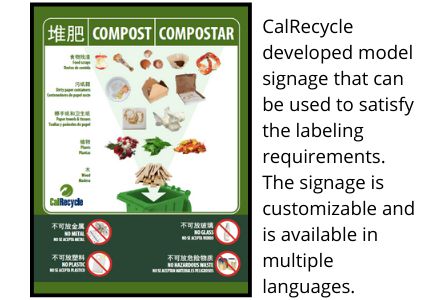
- A jurisdiction is not required to replace functional containers that do not comply with the color requirements prior to the end of the useful life of those containers, including containers purchased prior to January 1, 2022, or prior to January 1, 2036, whichever comes first.
Container Labeling
- Jurisdictions are required to provide labels on the new lids or container bodies that explain which materials are allowed and prohibited in the container.
- Labels must include text and/or images.
- Labels can be stickers or imprinted directly onto the lid or body of the container.
Jurisdictions have the option to waive collection requirements entities under very specific circumstances. CalRecycle can waive collection requirements for state, federal, and school districts under very specific circumstances. A waiver may be issued for a five-year period.
De Minimis Waiver
A jurisdiction can offer two types of organics collection de minimis waivers to businesses if they source reduce, compost on site, or self-haul organic waste.
Waiver A Requirements
- More than 2 cubic yards of solid waste (recycling/trash/organics): approximately 12 large or 24 regular trash bags
- Less than 20 gallons of organic waste subject to collection in a blue container or a green container per week: approximately 2 tall kitchen bags

Waiver B Requirements
- Less than 2 cubic yards of solid waste (recycling/landfill/organics): approximately 12 large or 24 regular trash bags
- Less than 10 gallons of organic waste subject to collection in a blue container or a green container per week: approximately 1 tall kitchen bag

To issue a waiver, a jurisdiction must verify the business meets the threshold and rescind the waiver if the jurisdiction finds that the business exceeds the threshold.
Physical Space
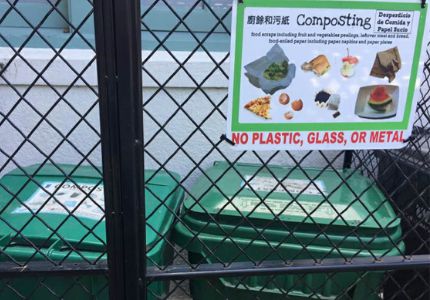
A jurisdiction may waive a commercial business’ or property owner’s obligation to comply with the collection requirements if the premises lack adequate space under a three-container or two-container collection service. However, few businesses and property owners can demonstrate the existence of space constraints that cannot be addressed through downsizing containers, using split containers, or through other solutions, so few of these waivers should be issued. The jurisdiction and business or property owner should work together to consider all feasible solutions to the space constraint before a waiver is issued.
Collection Frequency
A jurisdiction may allow an owner or tenant that subscribes to a three-container or two-container service to arrange for the collection of waste in a blue and/or gray container once every 14 days. To authorize this waiver, the jurisdiction must demonstrate that public health and safety will not be compromised.
For more information contact: Short-Lived Climate Pollutants (SLCP), Organic Waste Methane Emissions Reductions, SLCP.organics@calrecycle.ca.gov

